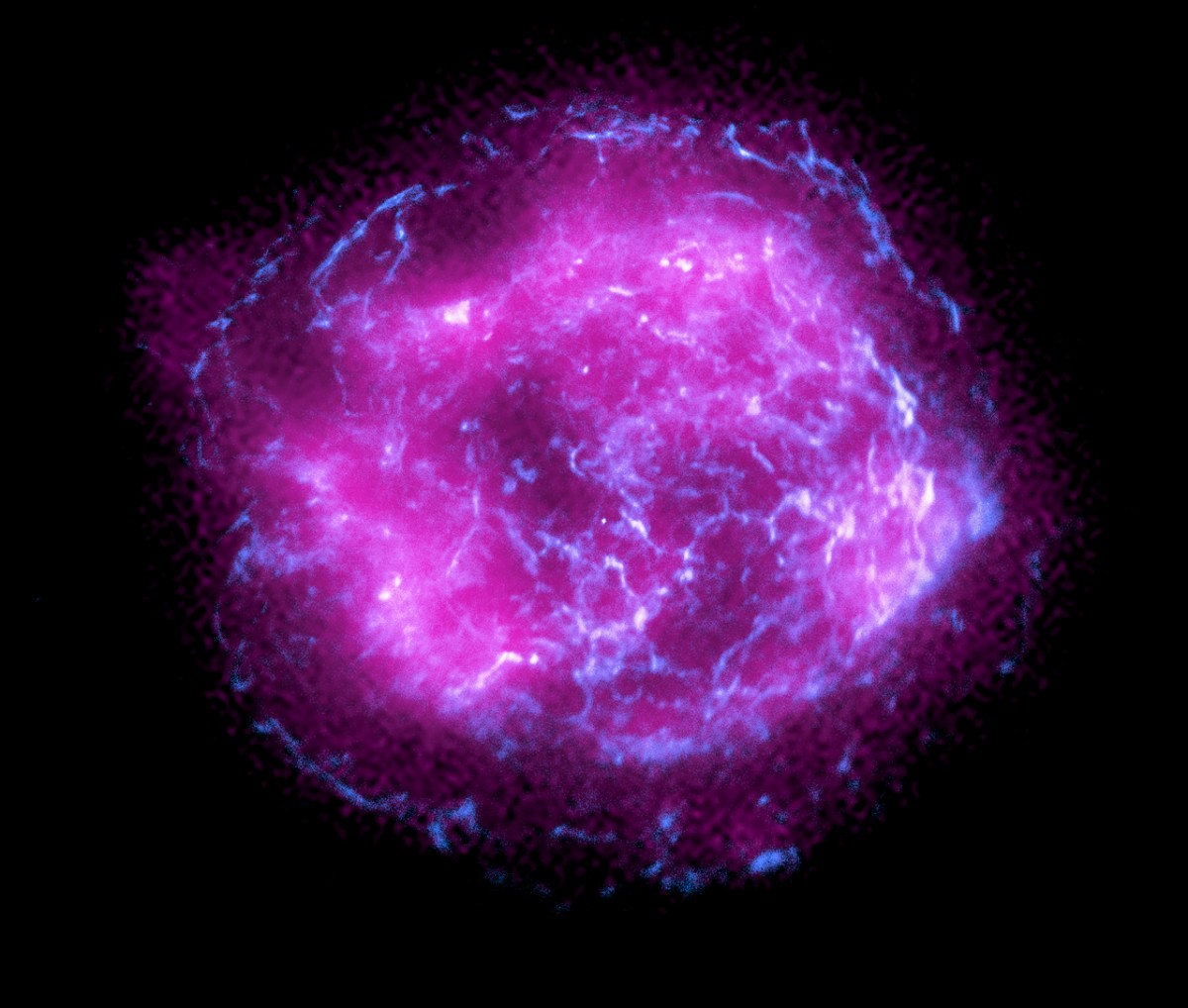HZDR team proposes improvements for an experiment designed to explore the limits of physics. Absolutely empty – that is how most of us envision the vacuum. Yet, in reality, it is filled with an energetic flickering: the quantum fluctuations. Experts are currently preparing a laser experiment intended to verify these vacuum fluctuations in a novel way, which could potentially provide clues to new laws in physics...
Read Morequantum electrodynamics tagged posts

This image of the supernova remnant Cassiopeia A, the first object observed by NASA’s Imaging X-ray Polarimetry Explorer (IXPE) satellite, combines some of the first X-ray data collected by IXPE, shown in magenta, with high-energy X-ray data from NASA’s Chandra X-Ray Observatory, in blue. The satellite later detected polarized X-rays from 4U 0142+61, a highly magnetized neutron star located in the Cassiopeia constellation.
A “beautiful effect” predicted by quantum electrodynamics (QED) can explain the puzzling first observations of polarized Xrays emitted by a magnetar – a neutron star featuring a powerful magnetic field, according to a Cornell astrophysicist.
The extremely dense and hot remnant of a massive star, boasting a magnetic field 100 trillion times str...
Read More
Researchers see application in future quantum technologies. The fundamental laws of physics are based on symmetries that, among other things, determine the interactions between charged particles. Using ultracold atoms, researchers at Heidelberg University have experimentally constructed the symmetries of quantum electrodynamics. They hope to gain new insights for implementing future quantum technologies that can simulate complex physical phenomena. The results of the study were published in the journal Science.
The theory of quantum electrodynamics deals with the electromagnetic interaction between electrons and light particles...
Read More
Keeping a close eye on everything: Christian Ast checks the connections of the scanning tunneling microscope (top). Researchers in the Nanoscale Science Department conduct their experiments in this instrument at lowest temperatures of a fifteen thousandth of a degree above absolute zero. The principle is always the same (bottom): A tunneling current (illustrated by the transparent bar) flows between an ultrafine tip and the sample, providing information about the properties of the sample. At these low temperatures the tunneling current reveals all of its quantum properties. Credit: Tom Pingel (top), MPI for Solid State Research (bottom)
What would happen if an electric current no longer flowed, but trickled instead? This was the question investigated by researchers working with Christian ...






Recent Comments